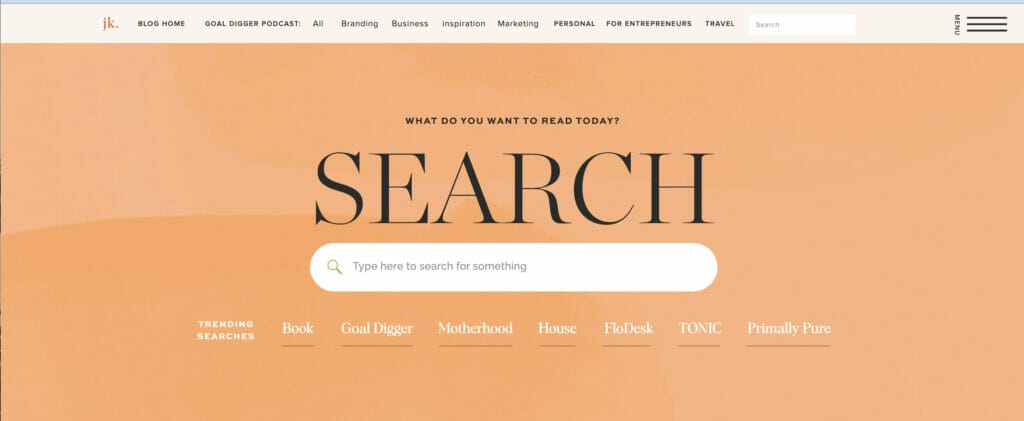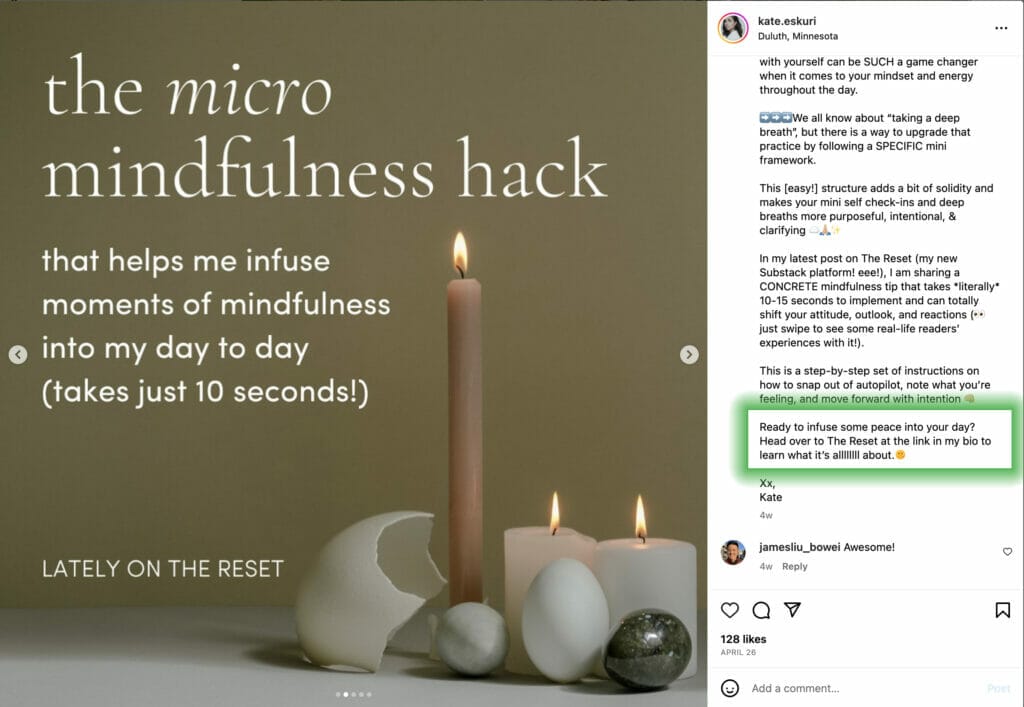So many people want to learn how to be a lifestyle blogger, and for good reason. While there are plenty of people who just want to share their life, hacks, and findings with others like them, there are others who want to reap the financial rewards of a successful lifestyle blog.
Who wouldn’t want to make a living documenting the life they’re living anyway?
The truth is, while that would be fun and exciting and even seems glamorous at times, there is a lot more that goes into becoming a lifestyle blogger than you might think. Regardless, if you want to make a presence for yourself online, we’ll teach you how to do it.
Table of Contents
Make a Choice: for Fun or for Income? How to be a Lifestyle Blogger from Start to Finish 1. Choose your focus 2. Come up with a name 3. Get the domain 4. Choose a hosting provider 5. Design your website 6. Create content (blog posts) Blog Post SEO Tips Since my background is SEO (search engine optimization) and content creation, here are my best tips for both: Coming Up With Blog Post Ideas 7. Promote your content There are a ton of ways to do this, but here are the top methods for promoting blog posts: 8. Grow your email list (optional) Examples of Lifestyle Bloggers You Can Learn FromMake a Choice: for Fun or for Income?
This is kind of a trick question because the only sustainable way you’ll make a living through lifestyle blogging is if it’s fun for you.
But this still begs the question, why are you doing it? Did you hear that you can make a lot of money from learning how to be a lifestyle blogger? Did you see ads of someone promising that you’ll make more than 6-figures from doing it?
Or do you have an interest in sharing your life, and you thought you’d take your journal and start publishing it online? The difference here is whether or not you’re going to be a lifestyle blogger for the right reasons. Doing it purely for the money won’t work.
It’s not a get-rich-quick method. It can take a long time of consistent work to start making an income from a lifestyle blog.
Which means your motive has to be deeper—better—than just making money. Is it? Or will you spend a lot of upfront time only to give up when you realize the work necessary to make that money?
Now, this doesn’t mean you can’t have a goal to make money blogging. It just means that if money is your only reason for doing it, you’ll run into problems with being consistent and making quality content.
How to be a Lifestyle Blogger from Start to Finish
It’s not a fast process. If you’re serious about learning how to be a lifestyle blogger, you may have to strap in for some education. As someone who’s been blogging and managing blogs for 10 years, I’ve narrowed this process to the main important points.
1. Choose your focus
Otherwise known as “niche,” the main area you’ll focus on is important for attracting the right audience. You might be thinking, “But Bella, I want to be a lifestyle blogger, isn’t that a niche?” Yes and no. Here’s why:
Your lifestyle is different than many other people’s. You may be an outdoorsy, nature-loving, holistic leaning person and that means your lifestyle content will be vastly different from the high fashion, modernized lifestyle of another blogger.
It helps to identify what your “thing” is. Just don’t feel like you need to remain in that box forever. But because you want to be a lifestyle blogger specifically, that box is a big larger than other, more specific niches.
Your focus will determine many other details when it comes to your process of learning how to be a lifestyle blogger, so spend time to figure out what it really is.
Here are some questions to ask yourself to discover your focus for lifestyle blogging:
What do you get excited about most in life? What do you spend your free time doing? What are others always asking you about? What recommendations to products/services do you find yourself making often? What would people describe you as an expert in?As you can see in the screenshot below, Jenna Kutcher has a few key areas that come up first, ranging from motherhood to business, her house decor, marketing topics, and more. So while she can be described as a lifestyle blogger, there are core areas she focuses on blogging about.

2. Come up with a name
There’s a ton of information out there to help you come up with a blog name. For me, there are two main options you can use:
Use your name Create a brand nameFor the first option, the reason is easy. If you want to create a personal brand around you, then using your own name or a variation of it will be enough to get your lifestyle blog off the ground.
But if you want to create a brand that could potentially grow beyond you one day, or even if you just want something fun and different, coming up with a unique lifestyle blog name can be really helpful. You’ll find quality, profitable blogs with both examples, so it’s up to you to decide.
And remember, you can always change this. But just remember that it can take a lot of time to rebrand, so give this a lot of thought.
Here are some tips for creating a lifestyle brand name:
Remember to utilize your niche or focus Use alliteration for memorability Take how the words look into consideration Jot down a bunch of words that are related to your niche, then write a bunch of words you’d use to describe yourself or your take on your niche Narrow down the choices See if you can combined a couple words into a single brand name Utilize synonyms for words to help find alliteration opportunities Google names to see if they’re taken alreadyHere are some lifestyle blog brand names to inspire you:
The Interior Instinct – home decor Home and Hearth – home decor The Design Diary – home decor Healthy Habits Hub – health and wellness Mindful Musing – health and wellness Passport Pages – travel Journey Junkies – travel3. Get the domain
This coincides with step 2 in that you’ll want a name where you can have a clean URL. Meaning, you can get BrandName.com without any dashes or frills. The reason for this is because it’s much more memorable, and assuming you’re in the USA, the “.com” extension is the most widely used and therefore, people will seek that domain.
Godaddy is a reliable service you can use to purchase the domain, but there’s also NameCheap and Google Domains that come highly recommended.
When coming up with your blog name, type them into the search bars available on these sites to see if it’s available or taken, like in the example below:

In many cases, if the name is unique enough, you’ll be able to purchase the domain name for very little. It’s about $15-20 a year to own the domain name, though hosting (having a website set up at that domain) tends to cost a bit more.
4. Choose a hosting provider
Depending on which platform you choose to create your site, the hosting may be set up alongside it. Hosting is essentially the place you’ll pay “rent” to have an online property. It costs money to have a website live on the internet, but it’s not crazy expensive.
You’ll pay anywhere from $15-$100+ a month, depending on how much traffic your site gets. The more traffic, the more you’ll pay to host your website online. If you want the domain you paid for to be used on your website, it will cost money.
Now, if you want to go the completely free route, you’ll create your website on a platform and won’t need to buy a domain. However, your URL will have the blog builder name along with your blog’s name, like this: yourblogname.wordpress.com if you build it on WordPress.
There are many hosting providers to choose from, with varying prices and visitor options.
We recommend you do your own research to make that decision, by simply Googling “hosting providers” and weighing the options for yourself and your own needs.
5. Design your website
The platform you choose to build your website will dictate the options you have to design it. By platform, we mean which site you’ll use to edit the site and upload content.
Popular website platforms you’ve probably heard of are:
WordPress (what this site uses) Squarespace Wix ShowitThose are the big four. We recommend WordPress due to its massive popularity, customization plugins, and ample help tutorials online. I personally use Showit because of it’s high level of customization but only recommend it if you love and have an eye for design, and are also good at new technology because it does have a learning curve to use.
The last three steps will all go hand-in-hand with each other. When you choose hosting, you have to connect it to your platform, connect it to your domain, and then design it. Each platform will have instructions for how to do this, so you’ll have to research this step depending on which you choose.
You can also always hire these steps to be completed, especially if you’re more interested in learning how to be a lifestyle blogger for the next section and not all the technical aspects.
6. Create content (blog posts)
If you’re not a good writer, it’s going to be difficult to write many blog posts. This isn’t to say that you can’t learn how or improve. The very best way to become a better blog writer is to practice. Write, read, edit, repeat. Over time, you’ll get significantly better. Take it from someone who’s been writing blog posts for about 10 years now.
Apart from the writing quality itself is the content quality. While you don’t have to make every piece of content perfect, you do want it to be worthwhile. Meaning, do your ideas justice and respect the reader. No matter what you’re blogging about, there is someone on the other end seeking something from your posts. They’ve clicked on it and therefore, have dedicated their time to seeing what you have to say.
Don’t half ass it. There is a responsibility to good content that comes in the form of recognizing that every “hit” your post gets is a real person on the other side. So how do you do that? You write about what you know well, and research what you don’t.
I can give you dozens of tips to make your blog posts search engine optimized so they show up on Google and other searches, but the fact is that if your content is good, it will naturally meet most metrics that Google is looking at anyway. This includes time on page and engagement metrics like sharing, bookmarking, and how many other pages on your site they’ve visited.
Blog Post SEO Tips
If you want your blog posts to show up on search engines, you’ll want to optimize them for it.
Since my background is SEO (search engine optimization) and content creation, here are my best tips for both:
Use the keyword where it can fit naturally: You wouldn’t actually use a keyword as much as Google wants to see it. But you absolutely cannot go overboard and put it in every sentence. Instead, write in a way that makes the blog post topics, like ours in this post about how to be a lifestyle blogger, come up “naturally”. That very sentence is an example. I used the keyword, but could have used any other example. Find spaces to use it but edit the sentences so it fits and read authentically Research what is already ranking on Google for your keyword: The SERP (search engine results page) is telling you exactly what searchers want for that keyword. But only look at this for the intent of the keyword. Basically, what information are the blog posts covering that are ranking at the top? This tells you the purpose of people searching the term in the first place. An example of this would be “children’s book characters”. A blogger teaching writing advice might see this keyword and think it’s about writing children’s book characters, but the SERP tells us that the searchers want a list of good characters already existing in books. Figure out what searches want to learn, and make sure to cover that in your blog posts Write to the intent, but add new information: You want to make sure you’ve got the intent covered, but add new or different information than what’s already ranking. If your blog post is just a rehash of what’s already on Google, the algorithm won’t find it useful to give other searchers access to. If you have new information other blog posts aren’t covering, the algorithm will want to show searchers that, and will therefore boost your blog post’s ranking Include data, facts, and stats you’ve compiled: This isn’t always relevant but helps significantly. The Google algorithm really values accurate, unique information. If you’re able to answer questions and give insight while citing data you’ve compiled yourself, it’ll be valuable. Just make sure to link to any studies and external sources because external links are important too! Internally link to similar content: The Google Algorithm builds an identity for your website (sort of). It maps your site’s content to help it understand what you cover and how the posts are connected to one another. By linking from one blog post to another with anchor text (the text that’s linked) that’s the other blog post’s keyword, you’ll help Google understand your site, which will help new and old content rank. That means crafting some sentences to include keywords of related posts, like this one about how to write a good blog post, where appropriate Be consistent with publishing: If you don’t post new blog posts, the Google algorithm won’t crawl your website. That means your blog posts are much less likely to rank because Google will determine your site to be outdated and inactive. Posting consistently, at least a few times a month, is necessary to get the algorithm to visit your site consistently Update your old posts yearly: Google wants fresh content, and even old blog posts can be republished after you update them. You can even change the published date so it appears as fresh on the SERP. Just make sure you’re actually updating the post and not just changing the date. The algorithm will be onto you and will ignore your blog post and site Use a software to check SEO: I fully believe you should be able to fully optimize a blog post by yourself, but there are apps that give you checklists, which are helpful if you’re just starting. Popular ones are Yoast and Rankmath. Add them as plugins to your site so you can see the status of each post as you write itComing Up With Blog Post Ideas
It always helps to have a backlog of ideas, no matter what niche you’ll be writing in. Sometimes you’ll be inspired randomly and other times you’ll have no idea what to write, but still need to publish a new post to be consistent.
Here are some blog post types to consider when drafting ideas:
How-to style list articles: these perform really well on Google, especially if you give a numbered list. Cover topics in-depth and these can serve as your “pillar” content. Why / benefits articles: Dive into some benefits or reasons someone should pursue certain activities, habits, or products In-depth studies: If you’re the studious type, head to Google Scholar and compile data around an area of your niche to uncover some lesser known information your audience will find helpful Reviews & product features: These style articles are a great way to embed affiliate links to make an income as well as attract brand sponsors. Just write about your experience with a product or service. Life routines and habits: Do you have certain habits and routines that have been helpful? Share your insights with these style blog posts. These often pair well with the why/benefits style articles too. Mistake-style articles: Instead of taking the standard “how to ____” approach to content, you can also make “Mistakes you’re making with ___” and take that angle.Whatever types of content you choose to make, remember to be varied in its type. You don’t want only how-to blog posts and you definitely don’t want product review posts only. Create a mix, and link them with one another!
Bonus Tip for a HUGE Content Backlog:
When creating a blog post, especially pillar posts, pull out a subheading and create an entire blog post JUST about that. An example for this blog post is the next point below about “promote your content” and this blog post about how to promote your blog posts that goes into even greater detail.
This will give you a long, comprehensive list that you can internally link and build your website
7. Promote your content
If you just want to publish what you like and not worry about attracting any viewers, you can skip this step. But if you actually want to get viewers to your website, you’ll have to promote your content and let the world know there is something on that site.
There are a ton of ways to do this, but here are the top methods for promoting blog posts:
SEO: free promotion by Google if your post ranks high enough for search terms Pinterest: learn the methods of using Pinterest to upload pictures that link to your content Guest posting: ask to write a blog post on another person or company’s website where you can link to your blog Ads: this isn’t as highly recommended because it’s difficult to do well, but you can set up your blogs to run as ads on Facebook or Google Collaboration: connect with other bloggers in your niche and offer to collaborate in some way. This could look like creating a “series” of content but splitting the blog posts between a few people and linking to each other’s blog posts. Social media: if you have an online presence or want to grow one, you can mention or reference your blog posts in your social media posts like in the example by Kate Eskuri below.
Promoting your lifestyle blog can be challenging at first, but keep going! Figure out the methods that work best for you by analyzing your social media numbers as well as your traffic sources (with Google Analytics).
8. Grow your email list (optional)
It’s optional, but not if you want to monetize your blog or have a list you can use to sell sponsorship slots or sell your own product or service in the future.
There is a basic method with a lot of room for variability here: create free resources, discounts, or deals and require an email and first name in exchange for it.
You’ll often see these as pop-ups or offers inside the blog post itself, and you’ll need an email service provider to do this well.
We recommend these options for service providers:
Mailerlite—free version available Flodesk—fair pricing and diverse capabilities Kit—high capabilities, but can be pricey if you get a lot of subscribersExamples of Lifestyle Bloggers You Can Learn From
Note that you will learn from them, not copy. It’s hard to see what someone else is doing and love it, and not copy it. The truth is that doing this will rob you of integrity and it’ll also keep you further from your own, unique brand.
Instead, if you see something you really like about these lifestyle bloggers, ask yourself what about it you like. Uncover the commonalities you can be intentional about creating anew with your own brand.
Jenna Kutcher The Foundation Blog by Kate Eskuri (Jenna Kutcher’s sister, actually) Camille Styles The Skinny Confidential Quintessence Wit & Delight The Blonde Abroad Positively Present The Confused MillennialLearning how to be a lifestyle blogger often involves a lot more than you might think. The best advice we can give you is to keep going! If you implement these steps and remain consistent, you’ll have a thriving blog in a matter of a couple years.
Want more writing advice?
Subscribe to get our latest content by email.
Subscribe
We won’t send you spam. Unsubscribe at any time.











 Bengali (Bangladesh) ·
Bengali (Bangladesh) ·  English (United States) ·
English (United States) ·